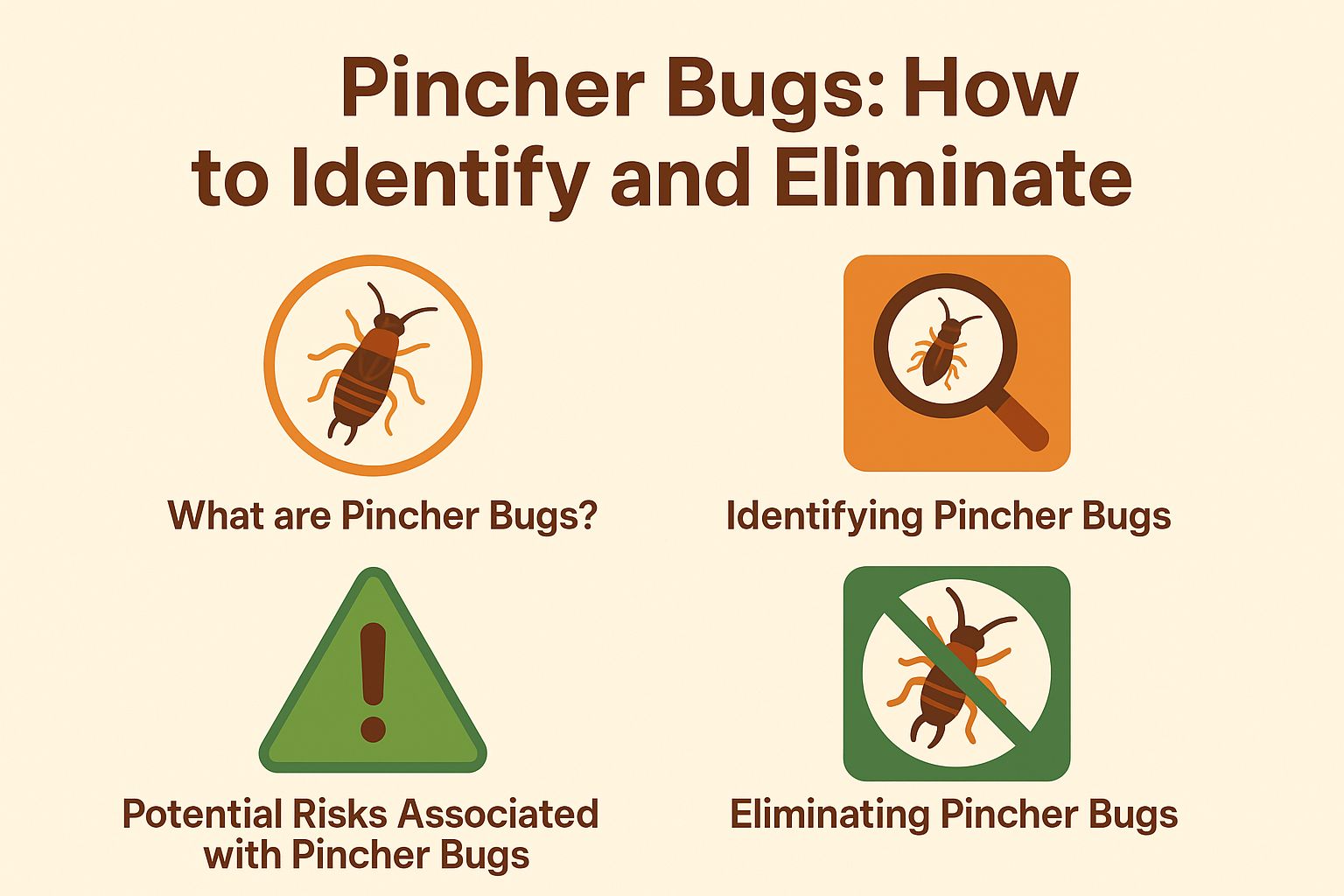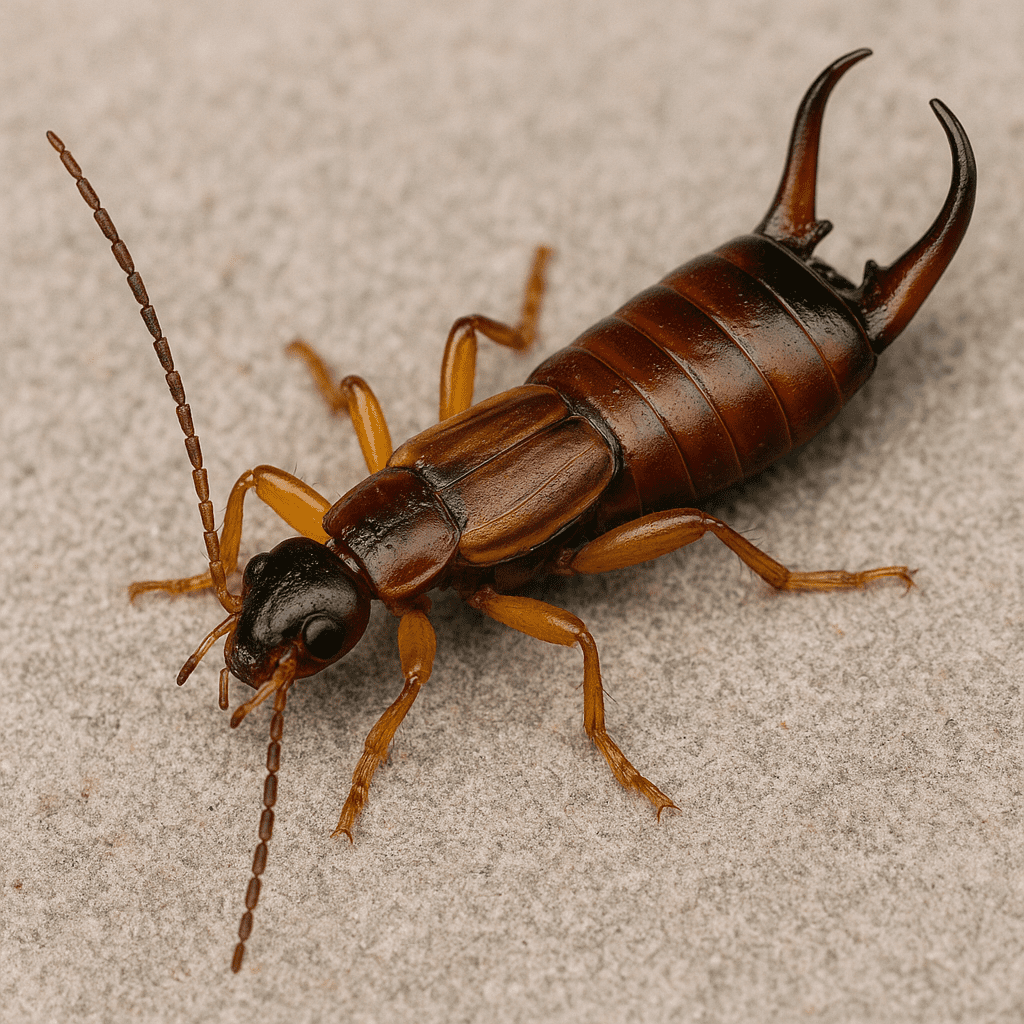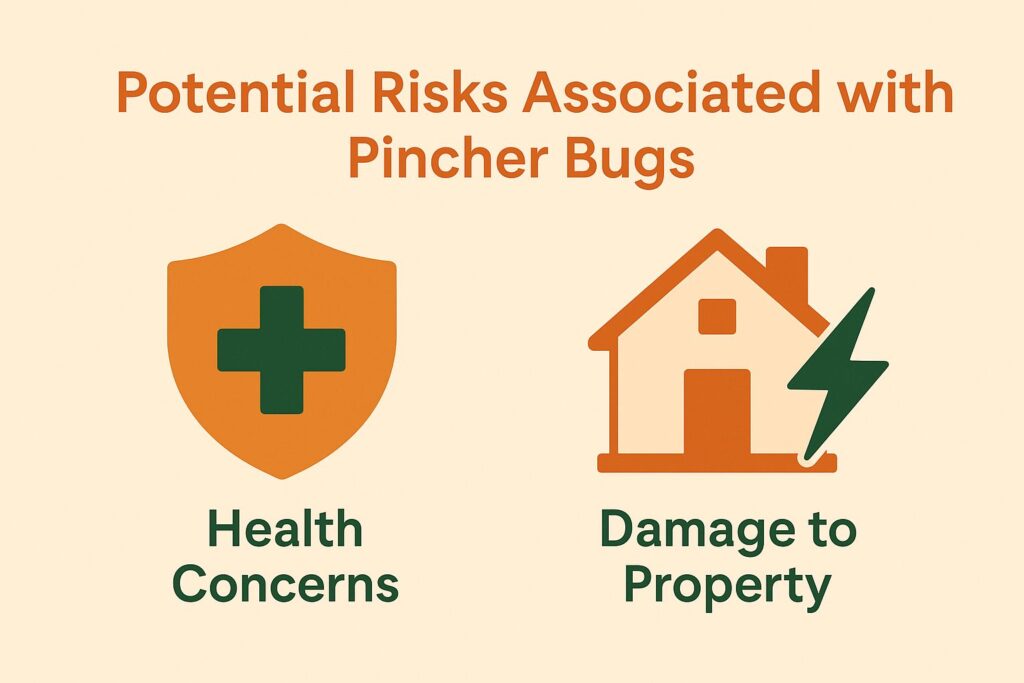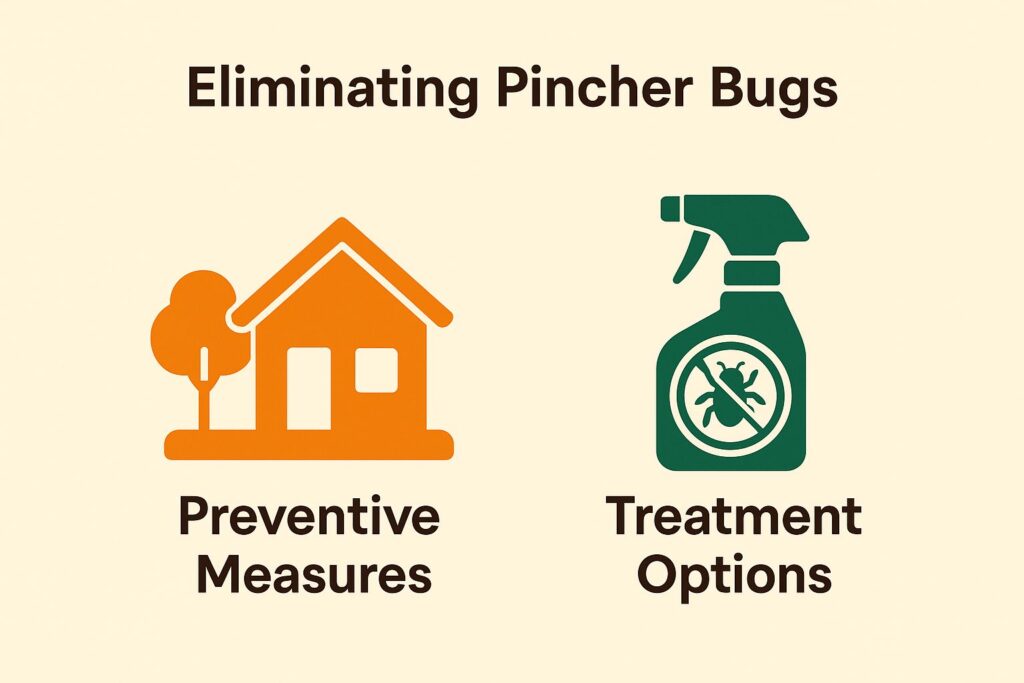
Pincher Bugs: How to Identify And Eliminate
Pincher bugs, often mistaken for harmless insects, can be a nuisance in homes and gardens.
This guide will help you identify these critters by examining their physical characteristics and behaviors.
Learn about the potential risks they pose, from health concerns to property damage.
Find effective preventive measures and treatment options to help eliminate pincher bugs from your space.
Find out all you need to manage your home again from these unwelcome guests!
What are Pincher Bugs?
Pincher bugs, often called earwigs, are interesting insects from the Forficulidae family, commonly found in pest-friendly environments. These bugs are usually seen in gardens and homes, where they help manage other pests.
Though sometimes confused with harmful insects, knowing their traits can help identify and manage them properly. In the study of insects, pincher bugs show specific behaviors that influence how they interact with plants and other bugs.
Knowing their place in nature helps in dealing with possible pest problems and fixing wrong ideas about pincher bugs. For those looking to identify other common pests, our guide on household pest identification offers insightful comparisons.
Identifying Pincher Bugs
First, if you’re not sure how to identify a pincher bug, here’s what they look like:

Finding pincher bugs can be easy once you know what to notice. These bugs have long bodies, pincers on their backs, and usually appear dark brown or black, characteristic of common pests.
You can often tell they’re around by their unique look and actions, helping homeowners recognize pest issues early through effective insect identification. Knowing these features is key for proper pest spotting and quick action to stop infestations and eliminate pincher bugs.

Physical Characteristics
Pincher bugs have unique features, so you can easily identify them compared to other insects. Typically, they feature a slender, elongated body measuring about 1 to 2 inches in length, with two prominent pincers extending from their rear, which they use for defense and capturing prey. The smooth exoskeleton and dark coloration of pincher bugs add to their unique insect anatomy, setting them apart from other household pests.
These insects often display a range of coloration variations, including shades of brown, black, or even a deep reddish hue. These differences help them hide better in different surroundings and also act as signals for recognition.
The anatomy of pincher bugs includes long, segmented antennae that can further distinguish them from similar pest species. Their unique, elongated legs are designed for agile movement, allowing them to scuttle quickly when threatened.
The pincers, which might look scary, are an important feature of the pincher bug’s diet. They give these bugs their common name and are essential for their survival.
Behavior and Habits
Knowing how pincher bugs act and what they do helps you control them in your home and garden. These nocturnal insects are typically found in damp, dark environments, such as under rocks or in mulch, where they can thrive in their natural insect habitats. They experience various phases in their life, beginning as eggs and maturing into adults. They frequently consume decaying organic matter, which can benefit the environment but can also be troublesome as irritating pests.
The lifecycle of these insects unfolds in distinct phases, starting from the egg stage where they are most vulnerable and progressing through nymph stages before reaching maturity, a key aspect of the pincher bug lifecycle.
During the mating season, which coincides with warmer months, the adults engage in courtship displays. They are particularly drawn to areas that provide adequate shelter, reflecting their need for moist environments to thrive.
By comprehending these patterns, homeowners and gardeners can develop effective pest management strategies, such as modifying pincher bug habitat conditions or utilizing natural deterrents, ensuring a balanced ecosystem while keeping pincher bugs at bay. Curious about how to identify dangerous spiders? Our analysis explains the key factors that can help you manage various pests safely.
Potential Risks Associated with Pincher Bugs
Although pincher bugs are often seen as harmless, they can actually harm both property and health.
These bugs can eat garden plants, which might make your outdoor area more likely to have problems. Even though they don’t bite people, having them around can cause issues like allergies or pest problems. Learning how to treat various pests effectively can mitigate these risks, as highlighted in our guide on common garden pests and their solutions.
It’s important to notice these possible issues early.

Health Concerns
Although pincher bugs are not known to bite humans, their presence can lead to health concerns that should not be overlooked. These nuisance insects can trigger allergic reactions in some individuals, and their secretions may cause skin irritation. Knowing the possible health dangers linked to pincher bugs is important for homeowners who might encounter them, particularly in regions where they are common.
For example, people who are sensitive to allergens may experience sneezing, itching, or serious breathing problems. The irritants present in their secretions may result in rashes or other dermatological conditions upon contact with the skin.
Knowing about these possible risks and learning how to handle encounters with pincher bugs, such as blocking ways they can enter homes and keeping things clean, can reduce the likelihood of negative health effects.
By adopting preventive measures, individuals can protect themselves and their loved ones from the irritation and discomfort that these common household pests may cause.
Damage to Property
Pincher bugs can cause considerable damage to your property, particularly in gardens and landscaping. Their feeding habits can lead to the destruction of plant roots and foliage, which can hinder growth and aesthetic appeal, highlighting the need for pest risk assessment. Recognizing the signs of a pest infestation early allows homeowners to implement effective pest control strategies to minimize damage and protect their property.
Beyond plant damage, these pests can also impact structures by invading spaces and creating unsightly messes. Infestations often involve crumbling plant tissue and wilting leaves, leading to a decline in health for susceptible plants.
To address these problems, different pest control methods can be used. Regularly inspecting plants for signs of pincher bugs, including their characteristic droppings and damaged foliage, is essential. Maintaining a clean garden free of debris can reduce hiding spots for these crawl space pests.
Using natural repellents and attracting helpful insects can also strengthen protection against these pests, employing natural pest control. For serious cases, professional pest control services may offer specific treatments to protect gardens and buildings.
Eliminating Pincher Bugs
To get rid of pincher bugs in your home or garden, it’s important to take steps to stop them from coming in and use treatments that work.
You can remove pincher bugs by using natural methods or pest control products designed to lower their numbers. It’s key to learn how to handle pests effectively to keep your space bug-free and avoid pest problems on your property.

Preventive Measures
Preventing pincher bugs is important for keeping them out, making sure your home and garden stay free of pests. Some good ways to stop pests include changing areas to be less damp, closing off places where they can get in, and keeping things clean to keep them away. Using pest prevention tips can greatly reduce the chance of infestation and strengthen your property’s defenses. Related insight: Effective Solutions for Long-Term Pest Prevention.
- To achieve this, homeowners should regularly inspect and repair any leaky faucets, pipes, or gutters, as even small amounts of standing water can attract pincher bugs. Ensuring proper drainage around the home and garden can deter them.
- Sealing cracks and gaps around windows and doors with caulk, as well as using weather stripping, helps block their entry, an effective DIY pest control method. Keeping outdoor areas tidy by clearing debris, trimming overgrown vegetation, and reducing mulch thickness can also minimize suitable habitats.
- By using these simple strategies, homeowners can make their living spaces less appealing to pests.
Treatment Options
Homeowners have different options for getting rid of pincher bugs. Chemical treatments and pest control products can work well, but natural methods are available for those looking for environmentally friendly options. Looking at different treatment options helps you find the best bug solutions for your specific pest problems (our guide to choosing the right pest control method offers valuable insights).
Many individuals may prefer to use chemical insecticides, which can provide fast-acting results and are often easy to apply. Options include:
- Sprays
- Granules
- Baits specifically designed for pincher bugs
It’s important to follow the instructions closely to reduce any risk to nearby plants and pets. On the other hand, natural solutions such as diatomaceous earth, essential oils, or even homemade pincher bug traps can be advantageous for those who prioritize sustainability and safety.
Ultimately, decide based on your own values, the impact on nature, and the seriousness of the pest issue, to find a sensible method for dealing with pests.
Leave a Reply